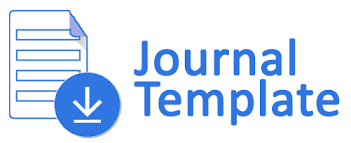Regulasi Emosi Secara Kognitif Guru dan Perilaku Antisosial Anak
DOI:
https://doi.org/10.29407/pn.v6i1.14869Keywords:
Regulation, Emotion, Cognitve, TeacherAbstract
Emotional regulation can be done with cognitive and behavioral approaches. The cognitive approach explains that the emotions felt by individuals are the result of an assessment of the situation they are facing. The research objective was to describe and explore the approach to cognitive-emotional regulation of teachers in dealing with the anti-social behavior of kindergarten children. This research method is a literature study with a qualitative approach. Basically, the literature study is related to theoretical studies and other references related to values, culture, and norms that develop in the situation under study. The role of cognitive-emotional regulation that teachers can do, includes: (1) teachers can teach children's emotional regulation by responding to emotions and teaching about emotions; (2) teachers can provide guidance in emotional competence by giving examples of positive and negative emotions, how to respond to children's emotions, and manifest emotions; (3) teachers can interact with children while identifying emotions that often arise in children
Downloads
References
Balzarotti, S., Biassoni, F., Villani, D., Prunas, A., & Velotti, P. (2016). Individual differences in cognitive emotion regulation: Implications for subjective and psychological well-being. Journal of Happiness Studies, 17(1), 125–143. https://doi.org/10.1007/s10902-014-9587-3
Burgess, L. M. (2006). Emotion regulation and behaviour, emotional and cardiovascular responses to interpersonal stress. An Arbor, MI:UMI.
Fried, L. (2011). Teaching teachers about emotion regulation in the classroom. Australian Journal of Teacher Education, 36(3), 117–127. https://doi.org/10.14221/ajte.2011v36n5.3
Garnefski, N., Kraaij, V., & Spinhoven, P. (2001). Negative life events, cognitive emotion regulation and emotional problems. Personality and Individual Differences, 30(8), 1311–1327. https://doi.org/10.1016/S0191-8869(00)00113-6
Garnefski, Nadia, Rieffe, C., Jellesma, F., Terwogt, M. M., & Kraaij, V. (2007). Cognitive emotion regulation strategies and emotional problems in 9-11-year-old children: The development of an instrument. European Child and Adolescent Psychiatry, 16(1), 1–9. https://doi.org/10.1007/s00787-006-0562-3
Graziano, P. A., Reavis, R. D., Keane, S. P., & Calkins, S. D. (2007). The role of emotion regulation in children’s early academic success. Journal of School Psychology, 45(1), 3–19. https://doi.org/10.1016/j.jsp.2006.09.002
Gross, J. J. (1998). The emerging field of emotion regulation: An integrative review. Review of General Psychology, 2(3), 271–299. https://doi.org/10.1037/1089-2680.2.3.271
Gross, J. J. (2002). Emotion regulation: Affective, cognitive, and social consequences. Psychophysiology, 39(3), 281–291. https://doi.org/10.1017/S0048577201393198
Gross, J. J., Richards, J. M., & John, O. P. (2007). Emotion regulation in everyday life. In Emotion regulation in couples and families: Pathways to dysfunction and health. (pp. 13–35). American Psychological Association. https://doi.org/10.1037/11468-001
John, E. (2011). Upaya meningkatkan kedisiplinan anak di kelas melalui cerita. Jurnal Pendidikan Penabur, 16(10).
Levenson, R. W. (1999). The intrapersonal functions of emotion. Cognition and Emotion, 13(5), 481–504. https://doi.org/10.1080/026999399379159
Strongman, K. T. (2003). The psychology of emotion: From everyday life to theory. In Wiley. Hoboken, NJ: Wiley.
Sugiyono. (2017). Metode penelitian kuantitatif, kualitatif, dan R&D. Bandung: Alfabeta.
Sutton, R. E. (2004). Emotional regulation goals and strategies of teachers. Social Psychology of Education, 7(4), 379–398. https://doi.org/10.1007/s11218-004-4229-y
Sutton, R. E., & Wheatley, K. F. (2003). Teachers’ emotions and teaching: a review of the literature and directions for future research. Educational Psychology Review, 15(4), 327–358. https://doi.org/10.1023/A:1026131715856
Thompson, Ross; Calkins, S. (1996). The double-edged sword: Emotion regulation in high risk children. Development and Psychopathology, 8, 163–182.
Westen, D. (1994). Toward an Integrative Model of Affect Regulation: Applications to Social-Psychological Research. Journal of Personality, 62(4), 641–667. https://doi.org/10.1111/j.1467-6494.1994.tb00312.x
Yulianto, D., Yufiarti, & Akbar, M. (2019). A study of cooperative learning and independence: Impact on children’s prosocial behavior. International Journal of Educational, 12(1), 49–55. https://doi.org/10.17509/ije.v12i1.17522
Downloads
Published
Issue
Section
License
Authors who publish with this journal agree to the following terms:
- Copyright on any article is retained by the author(s).
- The author grants the journal, right of first publication with the work simultaneously licensed under a Creative Commons Attribution License that allows others to share the work with an acknowledgment of the work’s authorship and initial publication in this journal.
- Authors are able to enter into separate, additional contractual arrangements for the non-exclusive distribution of the journal’s published version of the work (e.g., post it to an institutional repository or publish it in a book), with an acknowledgment of its initial publication in this journal.
- Authors are permitted and encouraged to post their work online (e.g., in institutional repositories or on their website) prior to and during the submission process, as it can lead to productive exchanges, as well as earlier and greater citation of published work.
- The article and any associated published material is distributed under the Creative Commons Attribution-ShareAlike 4.0 International License









